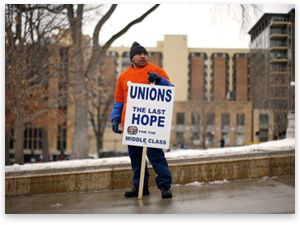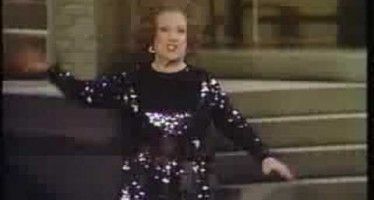California, the union state
By Joseph Perkins
The U.S. Bureau of Labor Statistics reported this week that the national union membership rate (the percentage of wage and salary workers who are members of a union) fell to 11.3 last year from 11.8 percent the year before that. BLS also reported that actual number of unionized workers shrank to 14.4 million last year, a decline of some 400,000.
There were a handful of states that bucked the trend and, surprise, surprise, surprise, California was one of them. In fact, unions here in the Golden State grew their ranks last year by 100,000 members.
It’s not because of exceptional recruiting by such union leaders as Dean Vogel, president of the California Teachers Association; Laphonza Butler, president of the California Service Employees International State Council; and Art Pulaski, chief officer of the California Labor Federation.
It’s because, while private sector payrolls here in California only modestly increased in 2012, state and local government added employees at a clip unseen since before the Great Recession.
The additional 100,000 union members enabled CTA, SEIU, CLF and their union confederates to really throw their political weight around last year.
Indeed, Jerry Brown was barely a few minutes into his long-winded State of the State Address this past Thursday before he paid homage to Vogel, Butler, Pulaksi, et al. “I salute the unions,” he said, “their members and their leaders. You showed what ordinary people can do when they are united and organized.”
What California labor unions showed they could do was pull off a political trifecta this past November.
Spending well more than $100 million of the nonconsensual dues collected from rank-and-file members, unions delivered Democrats supermajorities in both the state Assembly and state Senate, won approval of Proposition 30, a $30 billion state tax hike, and defeated Proposition 32, which would have reined in the outsized political influence unions wield in the Golden State.
Now it’s time for the Big Payback. The unions fully expect Gov. Jerry Brown and the Democrat-controlled Legislature to show their gratitude in a tangible way.
Billions
It means billions more in state education spending, most importantly for unionized teachers and staff.
It means more taxpayer “investment” in public infrastructure — from roads and bridges to water projects to the High-Speed Rail project — with contracts going to private companies that agree to union-only Project Labor Agreements, or at least, artificially-inflated prevailing wages.
It means new taxes, enacted by the unimpeded Democrat supermajorities in the Legislature, with the additional “revenues” used to pay for union goodies, including sweetheart labor contracts and gold-plated pensions.
It means less than zero possibility that union reform legislation, including right-to-work and enforcement of Beck rights, will be included among the 1,000 or so bills that will make it to Gov. Brown’s desk this year.
One need not be a millionaire Brown demagogued for unwillingness to pay higher taxes, nor among the “wealthy corporate interests” demonized by labor bosses, to find worrisome, if not downright ominous, the power wielded by California unions, which effectively function as the fourth branch of state government.
They may represent well the interests of the 17 percent of California workers that are union members. But certainly not the interests of the other 83 percent of us.
Related Articles
LAO Whitewashes Gov. Brown’s Rosy Budget
Jan. 15, 2013 By Katy Grimes SACRAMENTO — “Everything’s Coming Up Roses,” from the Broadway musical Gypsy, should be Gov. Jerry
Detroit sends CA another bankruptcy warning
The Stockton and San Bernardino bankruptcies in 2012 were the largest for cities in American history — until Detroit in 2013.
Doomed pension reform
MAY 12, 2010 By STEVEN GREENHUT “One cannot be both a progressive and be opposed to pension reform,” argued Gov.





